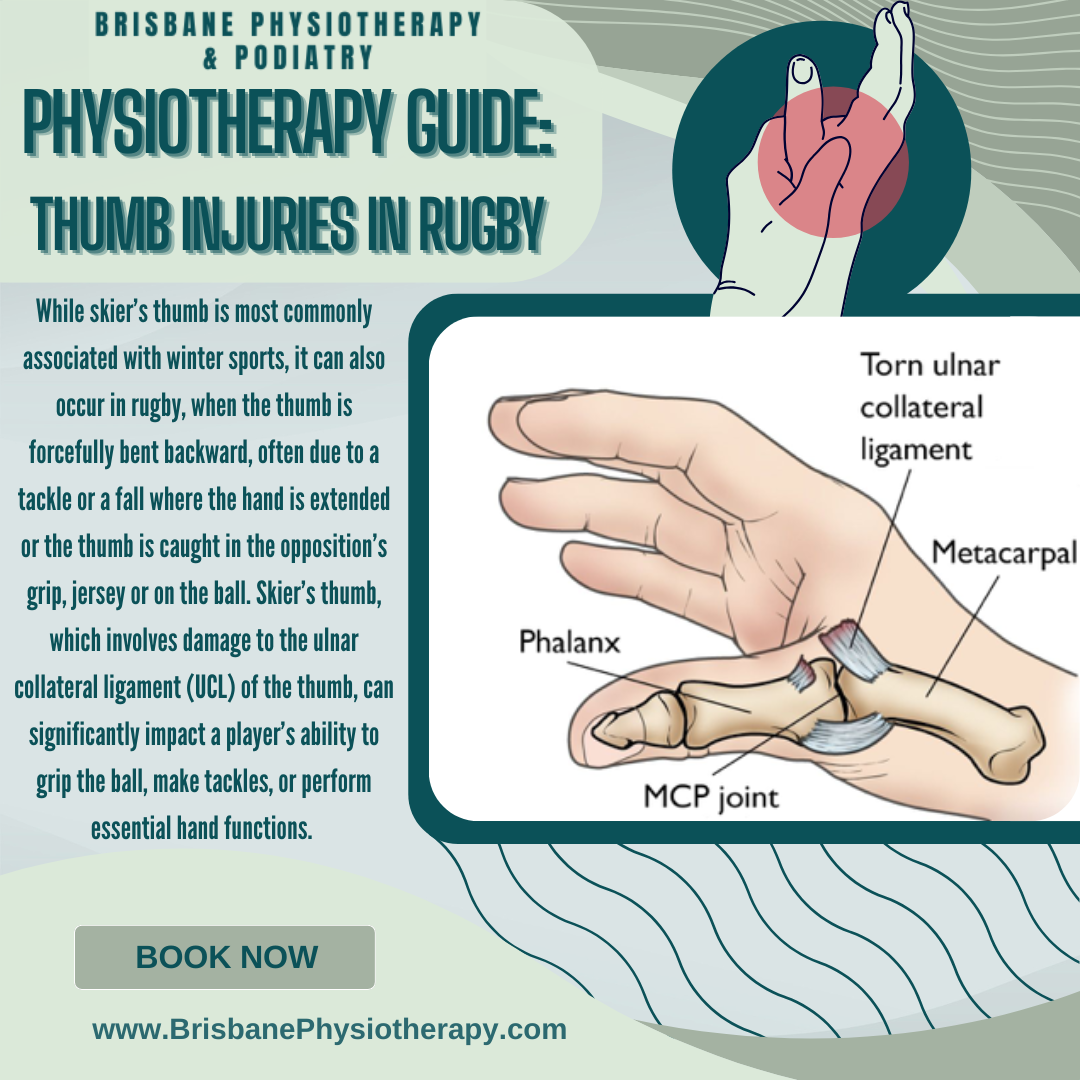Physiotherapy Guide: Thumb Injuries in Rugby
While skier’s thumb is most commonly associated with winter sports, it can also occur in rugby, when the thumb is forcefully bent backward, often due to a tackle or a fall where the hand is extended or the thumb is caught in the opposition’s grip, jersey or on the ball. Skier’s thumb, which involves damage to the ulnar collateral ligament (UCL) of the thumb, can significantly impact a player’s ability to grip the ball, make tackles, or perform essential hand functions.
Physiotherapy’s Role in Treatment and Rehabilitation
The physiotherapy approach to skier’s thumb focuses on reducing pain, promoting healing, restoring function, and preventing future injuries. The treatment plan is personalised to the athlete’s injury and recovery stage.
Pain and Swelling Management: In the acute phase of injury, physiotherapists focus on reducing pain and swelling using ice, compression, and elevation. Gentle soft tissue techniques may also be used to manage discomfort. A splint or brace may be recommended to immobilise the thumb, reducing strain on the injured UCL.
Joint Mobilisation and Range of Motion: Once the swelling and pain subside, physiotherapists begin working on restoring the range of motion in the thumb joint. This involves gentle joint mobilisation and specific exercises that encourage movement while ensuring that the ligament is not overstressed during the recovery phase.
Strengthening Exercises: As the healing progresses, the focus shifts to strengthening the thumb and surrounding muscles. This includes exercises to enhance grip strength, pinch strength, and overall dexterity. Strengthening the muscles around the thumb joint helps improve stability and reduces the risk of reinjury, which is particularly important in a sport like rugby, where hand and grip strength are crucial.
Sport-Specific Rehabilitation: Physiotherapists incorporate sport-specific rehabilitation exercises tailored to the demands of rugby. This can include drills to simulate gripping the ball, tackling, and other hand movements necessary for the game. The goal is to ensure the player regains full thumb functionality and the confidence to return to physical play without the fear of reinjury.
Conclusion
Skier’s thumb may not be a common rugby injury, but it is certainly possible in the high-contact environment of the sport. With the help of a skilled physiotherapist, players can recover from skier’s thumb injuries, regain full thumb functionality, and return to the pitch with confidence. Physiotherapists use a combination of pain management, joint mobilisation, strengthening exercises, sport-specific rehabilitation, and injury prevention strategies to ensure that athletes not only recover but also reduce their risk of future thumb injuries, helping them return to rugby stronger and more resilient.

